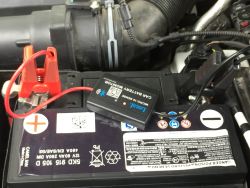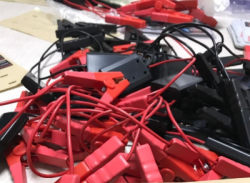Precautions And Maintenance Of Using Insulation Resistance Tester
2018-09-06
Precautions:
(1) During the process of shaking the insulation resistance, the speed should be gradually changed from slow to fast, and the handle should not be slowed down, so as to avoid the pointer swinging too large and causing errors. If the pointer is found to be zero, it indicates that the tested insulation has a short circuit fault. Do not continue to shake the handle to prevent damage to the moving coil inside the watch due to heat.
(2) When measuring the insulation resistance of capacitors, cables, large-capacity transformers and motors, etc., there must be a certain charging time. The larger the capacitance, the longer the charging time, which is generally based on the reading after 1 minute of rotation.
(3) When measuring the insulation resistance of a capacitive electrical device, after obtaining a stable reading, first remove the measuring line, then stop shaking the handle, and immediately discharge the device under test after the measurement.
(4) The surface of the electrical equipment to be tested should be wiped clean and free from dirt, so as to avoid leakage and affect the accuracy of the measurement.
(5) The measurement work is completed by two people. Before the tester does not stop rotating and the device under test is not discharged, the contact part of the measuring part and the resistance meter should not be touched by hand or the wire should be removed to avoid electric shock.
(6) When the instrument generator rocker is rated speed, no sudden short circuit is allowed between the terminal buttons to avoid damage to the instrument.
maintenance:
(1) When using, the instrument should be operated strictly according to the operating instructions;
(2) Do not store or use the instrument in high temperature, high humidity, flammable, explosive and strong electromagnetic fields;
(3) Please use a damp cloth or detergent to clean the instrument case. Do not use abrasives or solvents.
(4) When the instrument is wet, please dry it and store it;
(5) Care should be taken when using the instrument to avoid violent vibration, in order to prevent damage to the shaft tip jewel bearing;
(6) During the test, it is required that there should be no vibration around the work site and no electric welding work;
(7) During the test, the area around the site shall be kept clean; the equipment to be tested shall not have condensation;
(8) The ambient temperature is maintained at -25 to +40 ° C, and the relative humidity of the environment is not more than 80%.





